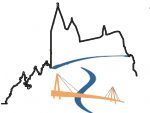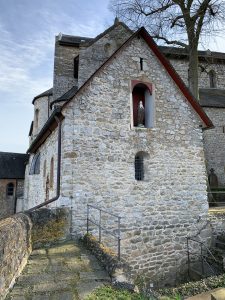
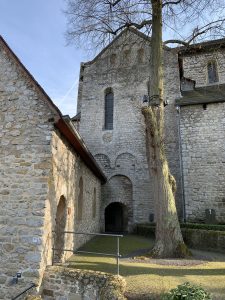
In the north-east of the Lubentius church there is the St. Michael chapel. In general, churches/chapels dedicated to St. Michael are often estimated to be very old. The chapel in Dietkirchen is estimated to have been built around 1000 AD. The chapel has probably been a chapel for the dead since ancient times, as there is a ossuary in the cellar/basement of the chapel, which was scientifically investigated between 2010 and 2015. (See also separate page St. Lubentius -> Chapel of St. Michael -> The ossuary).
Another argument in favour of a funeral chapel is the fact that St. Michael is considered the conductor of souls and is also called upon as the patron saint for a good death. By the way, St. Michael is also regarded as the patron of Germany and as the defender of the true faith and as the patron of the Catholic Church.
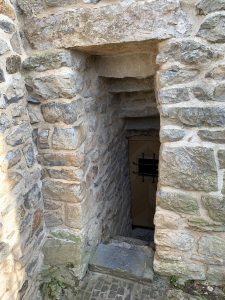
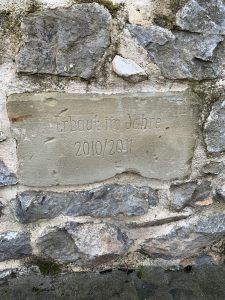
The St. Michael’s chapel has also undergone several structural changes over the years. The door, originally located in the middle, was walled up and replaced by a new door at the north corner. The windows on the west side were also changed. One window was walled up, the others were widened. Only one window on the north side and two windows on the east side still have their original character.
During the restoration work in 1956/58, remains of medieval paintings were discovered and determined.
A further restoration took place 2012-2013 by the ARGE Dipl.-Restaurator (FH) Sven Trommer & Kirchenmalermeister Restaurator i.H. Veikko Zocher.
Participants according to the website of the restorer Trommer (http://trommer-restaurierung.de/2013/10/dietkirchen_st-lubentius_michaelskapelle/) with status 10.03.2020:
Involved:
Wirth Engineering Office, Limburg-Dietkirchen
Eva Schmerr, Dipl.-Ing. Arch. – BO Limburg (Episcopal Ordinariate Limburg)
Dr Gabriel Häfele, BO Limburg – Diocesan Museum
Dr. Falco Lehmann, Conservator – LfD Hessen
Mr Markus Saal, UD City of Limburg
Work team:
Petra del Chin, restorer / Dresden
Stephanie Lüning, theatre painter / Dresden
Hartmut Mauersberger, restorer / Meissen
Claudia Reh, Free Artist / Dresden
Sven Trommer, Dipl.-Restaurator (FH) / Weilburg
Veikko Zocher, church painter master & Restaurator i.H. / Dresden
In the process, the room shell was restored and conserved, especially the existing wall painting. The plaster was conserved and added at the plinth. The paintings were cleaned and firmed up.
The painting on the west wall depicts the crucifixion scene. This painting is considered to be based on the Beuron School. It was probably painted around 1907.
The painting in the eastern apsidiole depicts the “Majestas Domini”, the glory of the Lord. Here Jesus is sitting on a throne. This painting is dated to the 13th century.
In many depictions of Majestas Domini, Jesus holds the Book of Life in one hand and the other hand is raised to give blessings. Since such a motif is often depicted in connection with the Last Judgement, the significance of the Chapel of St. Michael as a chapel of the dead is obvious here as well.
(An apsidiole is a small apse in a transept or side chapel. It is often only a wall niche and not accessible).
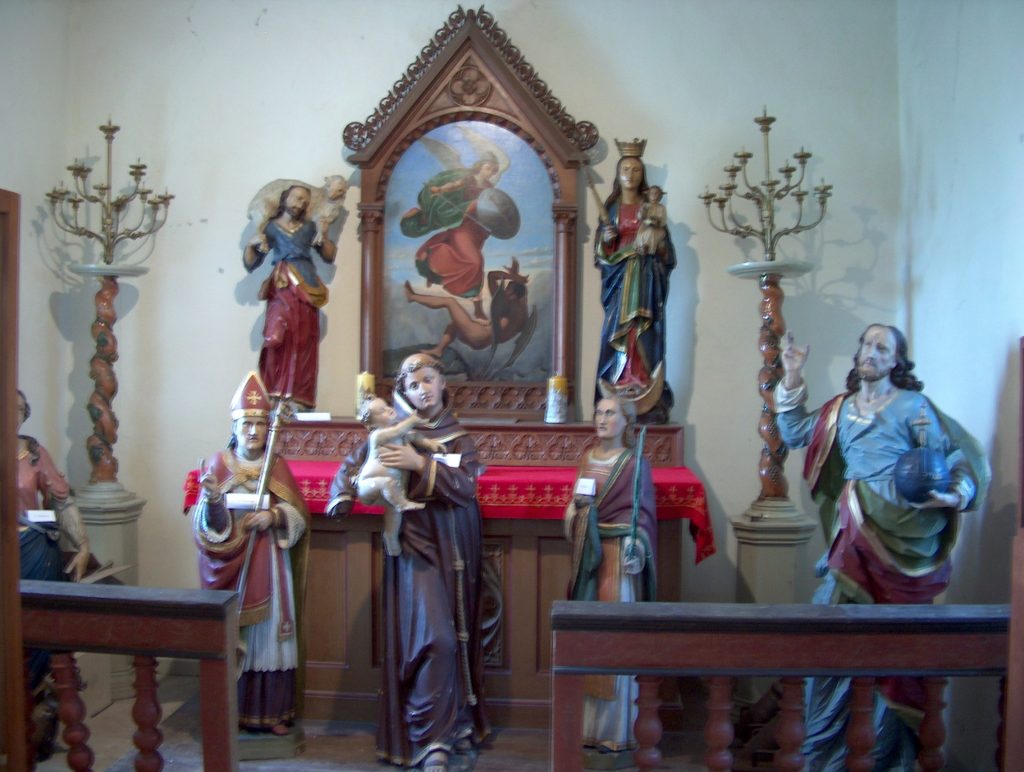
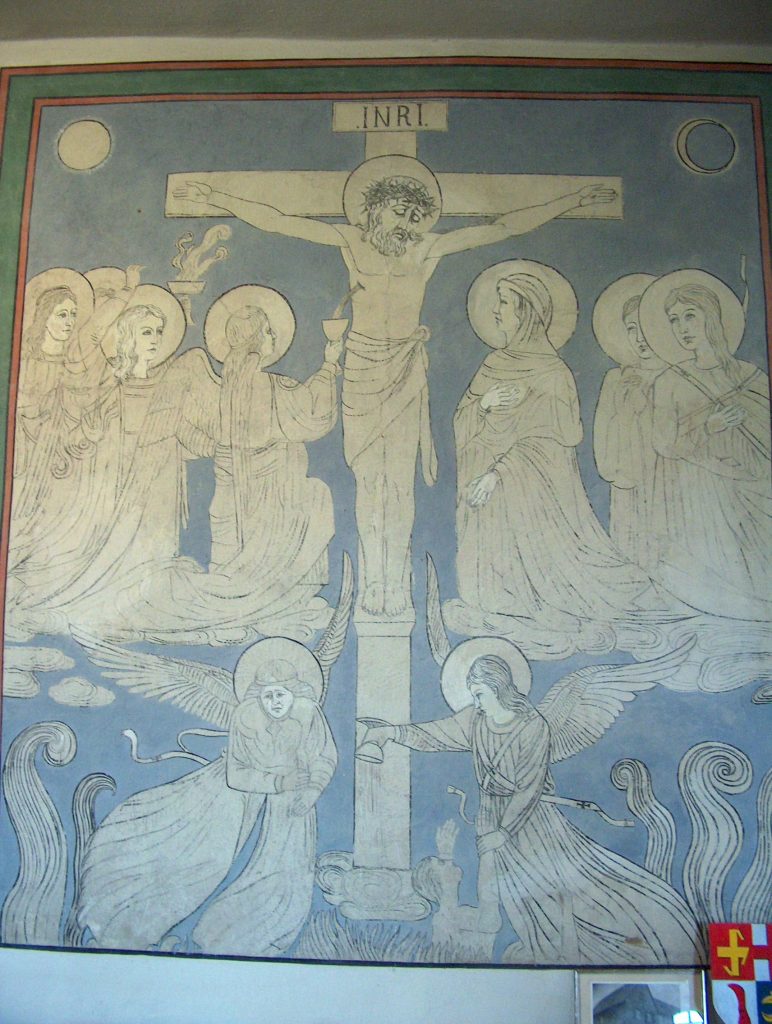
Pictures © Ludwig Ries
